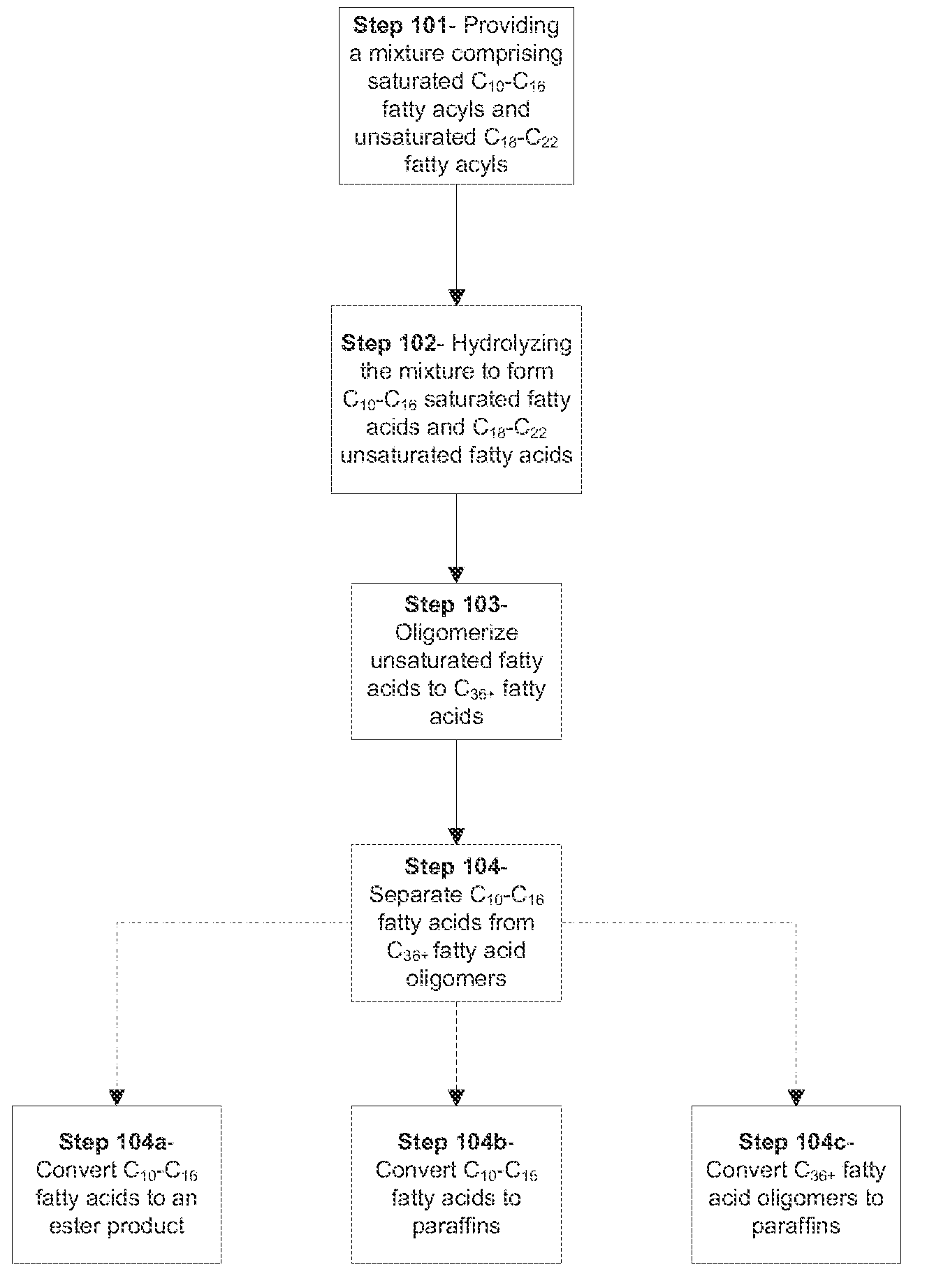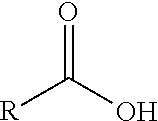Fuel and base oil blendstocks from a single feedstock
a technology of base oil and blendstock, which is applied in the direction of hydrocarbon oil refining, fatty acid chemical modification, hydrocarbons, etc., can solve the problems of poor low temperature properties of conventional fame, poor oxidation stability of fuel, and limited wide application
- Summary
- Abstract
- Description
- Claims
- Application Information
AI Technical Summary
Benefits of technology
Problems solved by technology
Method used
Image
Examples
Embodiment Construction
[0011]The following terms will be used throughout the specification and will have the following meanings unless otherwise indicated.
[0012]The term “biologically-derived oil” refers to any triglyceride-containing oil that is at least partially derived from a biological source such as, but not limited to, crops, vegetables, microalgae, animals and combinations thereof. Such oils may further comprise free fatty acids. The biological source is henceforth referred to as “biomass.” For more on the advantages of using microalgae as a source of triglycerides, see R. Baum, “Microalgae are Possible Source of Biodiesel Fuel,”Chem. &Eng. News, 72, 28-29 (1994).
[0013]The term “fatty acyl” refers to a generic term for describing fatty acids, their conjugates and derivatives, including esters, and combinations thereof. Fatty acyls encompass the esters derived from the reaction of fatty acids with alcohols. These esters may include fatty acid alkyl esters, such as fatty acid methyl esters, and fatt...
PUM
| Property | Measurement | Unit |
|---|---|---|
| wt. % | aaaaa | aaaaa |
| cloud point | aaaaa | aaaaa |
| viscosity index | aaaaa | aaaaa |
Abstract
Description
Claims
Application Information
 Login to View More
Login to View More - R&D
- Intellectual Property
- Life Sciences
- Materials
- Tech Scout
- Unparalleled Data Quality
- Higher Quality Content
- 60% Fewer Hallucinations
Browse by: Latest US Patents, China's latest patents, Technical Efficacy Thesaurus, Application Domain, Technology Topic, Popular Technical Reports.
© 2025 PatSnap. All rights reserved.Legal|Privacy policy|Modern Slavery Act Transparency Statement|Sitemap|About US| Contact US: help@patsnap.com



